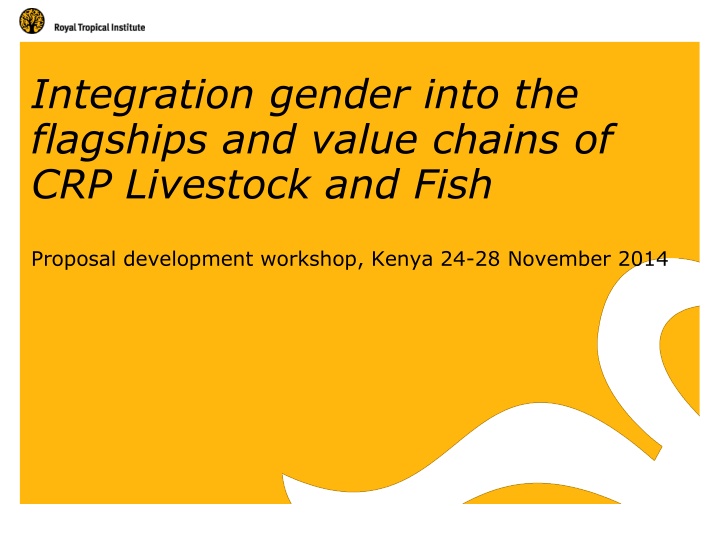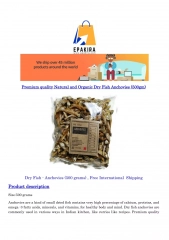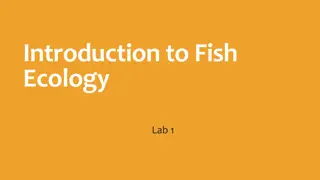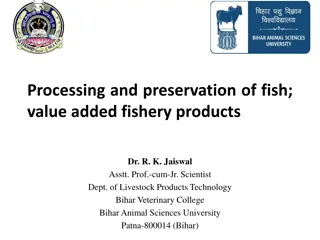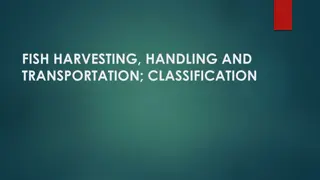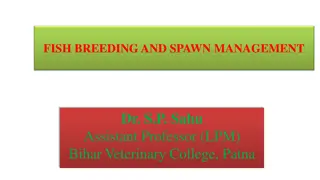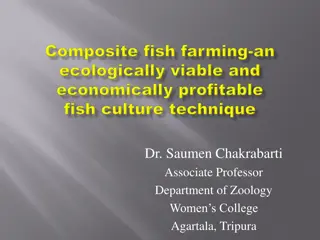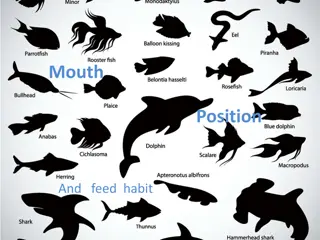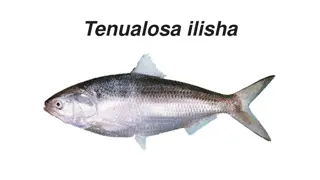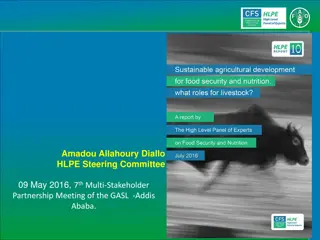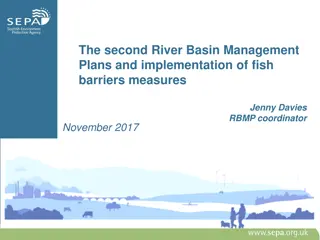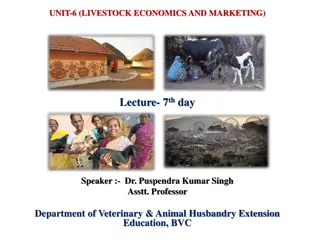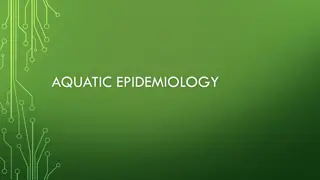Gender Integration in Livestock and Fish Proposal Development Workshop
The workshop in Kenya focused on integrating gender into the flagships and value chains of CRP Livestock and Fish, exploring the concept of gender mainstreaming. Lessons learned highlighted the need for attention to power dynamics, tangible results, and interdisciplinary institutional mechanisms.
Download Presentation

Please find below an Image/Link to download the presentation.
The content on the website is provided AS IS for your information and personal use only. It may not be sold, licensed, or shared on other websites without obtaining consent from the author.If you encounter any issues during the download, it is possible that the publisher has removed the file from their server.
You are allowed to download the files provided on this website for personal or commercial use, subject to the condition that they are used lawfully. All files are the property of their respective owners.
The content on the website is provided AS IS for your information and personal use only. It may not be sold, licensed, or shared on other websites without obtaining consent from the author.
E N D
Presentation Transcript
Integration gender into the flagships and value chains of CRP Livestock and Fish Proposal development workshop, Kenya 24-28 November 2014
In this presentation PART 1: What is gender integration? What is being integrated - multiple meanings and understandings of gender? How does gender integration in R4D affect gender relations? Where should gender be integrated the gender- responsive R4D cycle? PART 2: What we already know from existing research on gender dynamics in technology adoption and impact
What is gender integration? Concept of gender mainstreaming since Beijing 1995 ECOSOC definition: The process of assessing the implications for women and men of any planned action ... It is a strategy for making the concerns and experiences of women as well as of men an integral part of the design, implementation, monitoring and evaluation of policies and programs so that women and men benefit equally, and inequality is not perpetuated. The ultimate goal of mainstreaming is to achieve gender equality. Interaction s definition of gender integration: Gender considerations must be integrated within organizational structures as well as throughout all program interventions.
Gender integration - lessons learned Gender lost the political aspects of its meaning when it was absorbed in development policy and practice Cry for tools and technical focus on identifying missing inputs sidelined the attention to the results on the ground Emphasis on gendered organizational analysis did not break down the deep-seated genderedness of organizations among others because it did not address struggles over different systems of understanding (epistemes) Direction for the future attention/focus: Power; Results on the ground; and Institutional mechanisms for inter-disciplinarity
What is being integrated - multiple meanings of gender Quick scan of L&F gender options and concepts: Gender in terms of roles what men and women do Gendered constraints in productivity, livelihoods, decision-making processes (HH) Dynamics of gender relations in HHs or communities A few options refer to gender equality / empowerment outcomes Not always clear what gender refers Not always clear if/how options relate/contribute to L&F CRP gender strategy objectives
Gender integration in R4D with what effect? All R4D interventions interact with gender relations Gender relations are a key aspect of HHs, communities and in the institutional settings of development work therefore they affect what results can be achieved, how, and for whom R4D interventions can reinforce or challenge gender relations A continuum helps identify how gender affects development interventions It resonates with the idea of exploitative, accommodative and transformative approaches to gender integration of the L&F gender strategy
R4D can reinforce or challenge gender relations Ignore gendered realities Recognize & address gender realities Aim to transform gender relations Maintain status quo Remove gendered constraints Promote gender equality & women s empowerment Poor results Can improve women s day-to-day situation Improve productivity May do harm Gendered affects of R4D interventions
Gender integration in R4D where? For future agricultural research to produce meaningful changes, the differential needs, preferences, and constraints of female farmers must be recognized (Meinzen-Dick et al., 2011, p. 12). Gender-responsive R4D and extension cycle: 1. Priority-setting stage 2. Research and development stage 3. Extension stage 4. Adoption stage 5. Impact assessments
Some critical questions Priority setting: Where and how are the differential needs, interests, and priorities of women and men reflected? Who makes the decisions and sets the priorities? What gets funding? Research and development: Who are the researchers, and what are their gender capacities? Adoption of innovations: Who can and will adopt agricultural innovations? Who can benefit from them? What approaches are needed to overcome gendered constraints? Evaluation and impact assessment: How can evaluations account for women s preferences to more accurately assess progress? How can we use results of gender responsive evaluations and assessments to inform future research priorities?
Positioning: Why look at gender? 1. Women play a critical but often un-recognized role 2. Yield differentials women are not worse farmers than men in a technical sense. [ .] Rather, women often face constraints in access to and demand for the factors of production that would allow them to have yields equal to men . (Croppenstedt et al. 2013: 3) 3. So: gendered constraints: Women face other and often more constraints than men Gender gaps do not seem to systematically improve with economic growth, household wealth, or overall use of an input or resource in the country . (Croppenstedt et al. 2013: 24) 4. So: differentials are of systemic nature, And need to be addressed in explicit ways.
Conceptualizing farmers and households 1. Household does not act in unitary manner, because HH members have: - Different and shared interests in resource allocation (incl. land, labour, income, etc.) - Differences in decision-making power negotiation and bargaining So: need to look at different individuals within HHs (data) (main farmers, subholders, gender, age, ) 2. Types of households: - Comparisons MHH and FHH leaves majority of women out of sight - Heterogeneous FHH (divorce, widow, migrated husband, ) So: distinguish between different types of HHs
Individuals in households Data at individual level main farmer and subholders (in and outside HH) Gender and other factors (age, marital status, etc.) Key dimensions Division of labour (who, paid/unpaid work, access to labour, labour peaks) Access to and control over resources (land, water, extension services, income Decision-making (labour allocation, land allocation, farm mgmt, purchase of inputs, marketing, consumption, expenditures) Methodological implications Who is interviewed in HH? (if decision-making is joint, you can randomly choose wife or husband for INTs) How? (interviewer, framing questions, language)
Farming in broad sense Focus on single crop might neglect crucial dimensions Value chains perspective: Look at dimensions throughout the chain including post-harvesting, marketing, food preparation, etc. Homegardens, reproductive work Levels: Constraints due to institutional structures and context Market Extension & supply systems Cooperatives and groups Legal environment Attention for detail: e.g. smaller amounts of income Size of packaging / divisable technologies
Gender dynamics and technology 1. Gendered gaps in technology adoption: o Btw MHH and FHH o Women slower adoption rates 2. G relations affect adoption, but adoption also affects relations oDivision of labour oAccess to and control over resources (incl. benefits and income) oDecision-making processes and outcomes 3. Net effects? Technology can have positive and negative effect Women s labour burden can increase, but at same time their independence can grow. 4. Adoption is affected by anticipated effects o by expectations of how roles, responsibilities and relations might change
Hard to predict adoption and impact Gender relations are (always) changing (dynamic): Due to technology: see above Due to bigger picture trends (commercialization, land tenure, urbanization, market development, education, .) Constantly re-negotiated at multiple levels Divisions of labour respond to changing economic circumstances or new technologies Land access/tenure can change due to titling programmes or sustainability or profitability of farming techniques Implications: Hard to predict what will happen (adoption, impact) Contextual Impact cannot be assumed; needs to be investigated; requires continuous monitoring Quantitative and qualitative methods (narratives?) Not compare with/without , but before/after
